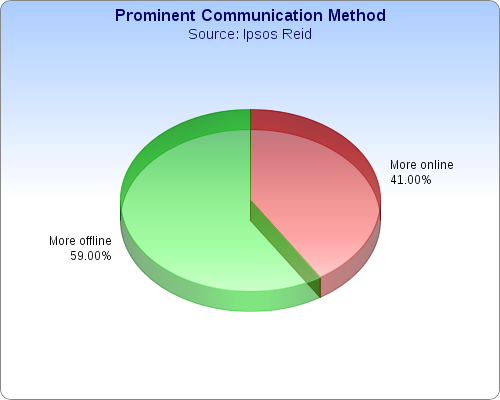Communication: Online vs. Offline

Research conducted by Ipsos Reid, Canada’s largest market research and public opinion polling firm, finds that slightly more than four-in-ten online Canadians, 41 percent, now describe themselves as communicating more with people online (via email, Facebook, chat, instant messaging, and other platforms) as opposed to offline.
Younger online Canadians (ages 18-34) are more likely to describe their communication habits this way; more than half, 52 percent, say they communicate more online than offline. However, the number of 35 to 54 year-olds is also quite high, at 40 percent, and even a large number of people 55 years of age and older, 36 percent, falls into this category.
What the Numbers Suggest
For HR, how people communicate obviously has significant implications. It affects day-to-day interaction among employees, how management relates to workers, approach with regard to training and development programs, employee recruitment initiatives, and so much more.
Increased connectivity, through better, faster Internet connections, portable computers, tablets, and smartphones, has contributed to the shift away from offline to online communication.
But so too has social media. Social networking platforms allow for a sense of community that knows no geographical limitations.
This online world is the world HR must navigate, and it presents many challenges.
How has the shift to, and often preference for, online communication impacted your organization’s workplace?
